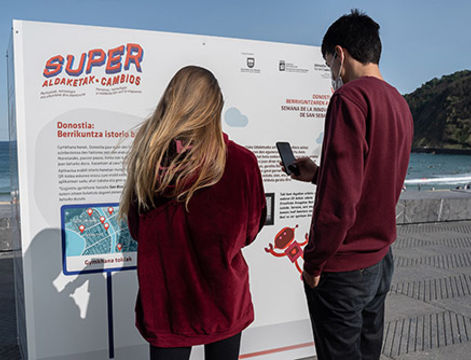
Donostia Innovation Week 2020
Innvation week continues depsite challenges created by Covid-19.
The objective of the Urban Manufacturing Project is to ensure that collaborative makerspaces thrive. We achieve this through identifying best practice, testing policy approaches and supporting our cities/regions in creating receptive conditions. Our hope is that we will demonstrate the impact that cooperative facilities can have on innovation and establish a European network of advocates.
WHAT ARE COLLABORATIVE MAKERSPACES?
Collaborative makerspaces take many forms, but common to all is the idea of producing physical objects through cooperation. This sharing can occur during ideas generation or fabrication and is most profound when different sectors come together.
The benefits of working in this way are numerous and include: new and improved products; an enhanced sense of community; increased mutual knowledge; quicker and more comprehensive solutions; and the tapping of latent potential. This leads to more effective and far-reaching innovation. Examples of collaborative makerspaces include Fab Labs, Open Innovation Centres, Living Labs and Cross-Sector Incubators.
Collaborative makerspaces are typically located within urban environments, so understanding the ecosystem – for example the interdependencies between education, policy makers and manufacturers – is of fundamental importance. Through nourishing these connected elements, cooperative facilities can flourish.
Through our partnership, we are analysing the effect of policies across seven related themes:
We develop our understanding through a process of knowledge sharing.
€2,038,749.00
Research and innovation
The project will produce:
We will do this through:
The beneficiaries will include:
The objective of the Operational Programme (OP)of the Lisbon region 2014-2020 is to strengthen research, technological development and innovation in the region.
Priority Investment No. 1b - Promotion of Business Investment in Research & Development, has a clear strand related to collaborative making, focusing on the development of connections between companies, research and development centres leading to applied pilot lines, early validation of products, first production and advanced production capabilities. Open innovation is seen as key, as is stimulating demand in networks and clusters. Of particular importance is the promotion of investment in new products and services developed in this way. Other areas of focus for the Priority include technology transfer, intelligent specialisation, support for technological research, enabling the dissemination of essential technologies, all alongside social and eco-innovation, particularly in situations which benefit the public.
This policy should be improved because Lisbon is looking to better connect its maker community to its research, technology and innovation base. Through this process it is posited that new strands of specialised, cooperative products will be created, stimulating the high-value economy. The knowledge generated will be shared with the corporate sector, improving networks within the regional innovation system. This will lead to increased business investment in Research & Development, developing value chains and opening up international markets.
Two Priority Axes of Greater Birmingham and Solihull Local Economic Partnership's (GBSLEP) ESIF programme directly relate to collaborate maker spaces:
Priority Axis 1: Strengthening Research, Technological Development and Innovation. Specifically:
* Building collaborative research between enterprises, research institutions and public institutions
* Physical infrastructure for innovation including incubation space for enterprises linked to research institutions
* Supporting businesses to commercialise research and development
Priority Axis 2: Stimulating Business and Enterprise. Specifically:
* Acces to physical space to encourage and support growth of enterprise, particularly through ... co-working spaces and approaches to enable grassroots design and manufacturing such as Fab Labs.
This policy instrument should be improved because GBSLEP is facing serious challenges in relation to innovation infrastructure, including:
* The low level of investment in innovation, despite a strong research base
* The low representation of high-value sectors in the innovation economy
The project will define how collaborative maker spaces can strengthen GBSLEP's approach to addressing these challenges, particularly through influencing key actions already defined in GBSLEP's Strategy for Growth:
* Putting in place the key enablers/infrastructure
* Stimulating demand for new products and services
* Promoting best practice in the management and governance of innovation
* Developing effective business networks
The overarching aim of the Operational Programme (OP) for Research and Innovation is to stimulate structural change in the Slovak economy, based on excellence in research and innovation, to support sustainable growth, employment and quality of life. Specifically, the OP contains a number of strategic objectives which are closely related to the topic of collaborative maker spaces:
1. Through the cooperation of local supply chains, deepen the integration of key major industries, so increasing local value
2. Increase the contribution of research to economic growth
3. Create a dynamic, open and inclusive innovation society
The particular Priority Axis which Bratislava has chosen to address is:
Priority Axis 2: Supporting Research, Development and Innovation in the Bratislava region.
with Specific Objective 2.2.2. Enhancing Research, Development and Innovation capacities in industry and services in the Bratislava Region.
The policy instrument needs to be improved because Bratislava wishes to better support collaborative innovation districts, as a means of meeting the challenges posed by globalisation and the transition towards a knowledge economy. For example, through the development of inter-disciplinary information and communication technologies, which contribute to new forms of knowledge. The city wishes to identify and mobilise the specific resources and competences of the territory which will catalyse collaborative innovation and so enhance cluster activity.
Vilnius will specifically address the Investment Priority "Strengthening Research, Development and Innovation".
The main feature of this priority is that it is designed to develop and support 6 particular measures of Research, Development and Innovation (R,D&I) (Smart Specialisation):
1) Energy and sustainable development
2) Inclusive and Creative Society
3) Agro Innovations and Food Technologies
4) Health Technologies and Bio-Technology
5) Transport
6) Logistics and Information and Communication Technologies
The policy instrument needs to be improved because levels of investment into these areas is lower than EU average - the aim is for ESIF to invest 1.9% of GDP. The two specific methods defined to reach this goal have strong links to collaborative maker spaces:
a) Improve research and innovation infrastructure, and the capacity to use Research & Development technologies, as well as encouraging the activities of professional Centres of Excellence.
b) Encourage business investment in Research & Development, social innovations, cooperation between business, universities and research centres, and the production of innovative products and services. Establish and support networks and partnerships at national and international level.
The approach to addressing the policy instrument will be to identify opportunities for the Cultural and Creative Industries to collaborate with more 'typical' R,D & I organisations, generating innovations, opening funding opportunities and allowing cultural operators better access to innovation infrastructure.
The main objective of the policy instrument selected by Zagreb is to encourage the devlopment of craftsmanship and small and medium sized enterprises within the city. Clearly, this aligns with the aims of Urban Manufacturing, in being focused on making in a city context. Currently this programme runs from 2013 - 2017, but through the project the city will seek to improve future iterations.
The policy instrument emerged from Zagreb's commitment to provide a nurturing business environment, particularly in preparing cratfspeople and entrepreneurs for the conditions of global markets. The City undertook research with trade organisations and other stakeholders, which further specified their needs. It also took into account exisiting strategic documents governing small businesses and the Development Strategy of the City of Zagreb (ZAGREBPLAN), the latter of which identified the main directions for activity in the field of craftmanship and provided a framework for incentive mechanisms.
Improvements are required because better alignment is needed between the policy instrument and the ESIF Operational Programme. The latter, for the period 2014-20 will feature an ITI (Integrated Territorial Investment instrument for Urban Development) and defining synergies will allow for more efficient treatment of collaborative innovation infrastructure.
The Basque Country Operational Programme (OP) 2014-2020 sets our the strategy and objectives for involvement in ERDF operations. It is organised according to identified regional needs designed to achieve smart growth. Specifically, San Sebastian will focus on Priority 1 of the OP, which is concerned with Strengthening and Promoting the Research, Development and Innovation (RDI) system in line with the Basque RIS3.
Within this Priority, Axis 1 addresses the need to strengthen and boost the RDI system in line with the Basque RIS3, concentrating on supporting investment by companies in Research and Innovation, and prioritising interventions which create a productive Innovation ecosystem. Of particular importance are those types of support which encourage business to collaborate with the actors if the Basque Science and Technology Network.
Further specific policy areas are:
IP1.2 Promotion of Investment by Businesses in Research & Innovation - development of linkages and synergies between businesses, research centres and higher education, in particular technology transfer, innovation platforms, innovation infrastructures, creation of innovative SMEs, networking, clusters and open innovation through RIS3.
and
SO1.2.1. Boosting and promoting R&I-led businesses, supporting the creation and consolidation of innovative firms.
This policy instrument needs to be improved as regional innovation actors currently lack a well-developed set of tools to enable collaboration.
Lazio Region proposes to focus on Priority Axis 1 "Research and Innovation" (OT1), Priority Number 6 "Instruments for Innovation and Creative Start-Ups".
This action 1.4.1 addresses new innovative and creative enterprises in the region, providing loans for start-up and growth. It also encompasses actors and organisations capable of offering financial support to facilitate the development of start-ups, such as incubators, consultancies and training providers. Additionally, it covers the application of knowledge and research, with spin-off activities in line with smart specialisation.
This action contains specific objectives for the Lazio Region, including:
* Promoting and sustaining at least 500 innovation and creative start-ups
* Creating interventions in at least 25 start-ups to help them pass to the second phase of growth
* Enhancing the generation and support of innovation and creative start-ups by strengthening private business incubators/accelerators
The policy instrument needs to be improved as Lazio Region is looking to develop links between its innovative and creative enterprises and the wider European maker movement. Through understanding where synergies lie with project partners, they hope to develop a clear dimension of European added value, encouraging trade agreements with collaborative maker spaces across partner cities/regions, leveraging in opportunities to internationalise and innovate, with a particular interest in the impact on traditional sectors.
The Operational Programme (OP) for the Implementation of the EU cohesion Policy 2014-2020 is a centralised OP for the territorial development of Slovenia, covering 11 Thematic Objectives. Within Urban Manufacturing, the aim is to adopt Goal 1: Fostering Research, Technology Development and Innovation
The specific Priority will be 2.1: “International competitiveness of Research, Innovation and Technology Development in cooperation with smart specialisation and bigger competitiveness for green economy, with a focus on sub priority 2.1.3: "Improvement of the Infrastructure for Research and Innovation and competences for the development of excellence in Research and Innovation, aligned with promotion of competence centres, especially in the European interest".
The Policy Instrument needs to be improved because, whilst investment in Research & Development (R&D) has so far created a good environment for innovation, there is a need to put more emphasis on the usage of R&D infrastructure to better support collaborative innovation processes, particularly in relation to the economy and public sector. This will allow the exploration of market potentials. Existing R&D infrastructure and partnerships (including maker communities) will be used to foster the transfer of knowledge, improving and developing new approaches to cooperation between the research base and economy, in line with smart specialisation. Within this, creative & cultural industries, different areas of science and the economy play a vital role.

Innvation week continues depsite challenges created by Covid-19.
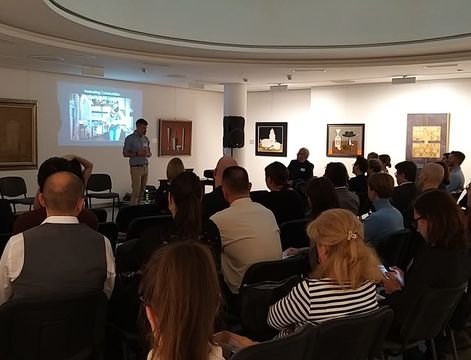
Find out what the team have learnt from #UMconf19.
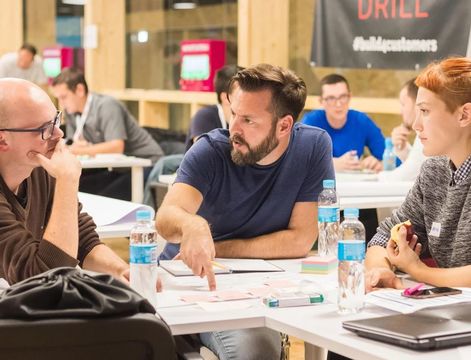
Zagreb has been making waves when it comes to impact on makerspaces. Lidija Pavic-Rogosic tells us how.

Birmingham City Council's, Heather Law, reveals how Birmingham’s Collaborative Maker Space (CMS) infrastructure can become more innovation active.
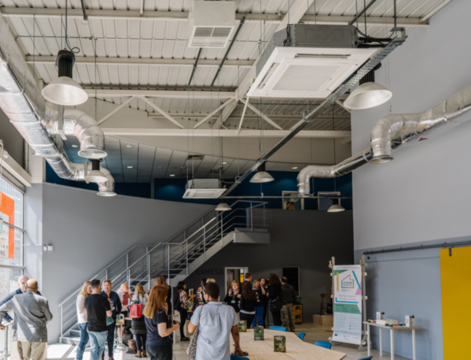
Birmingham City Council's, Heather Law, reveals how Birmingham’s Collaborative Maker Space (CMS) infrastructure can become more innovation active.
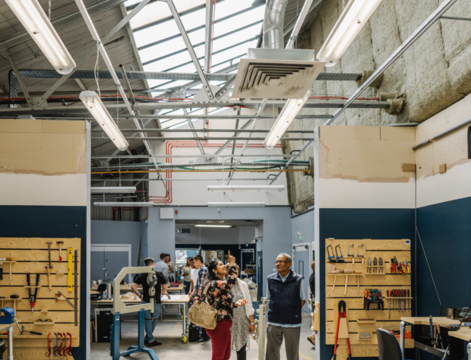
Laura Veart explains how the Birmingham maker space scene is a European exemplar.
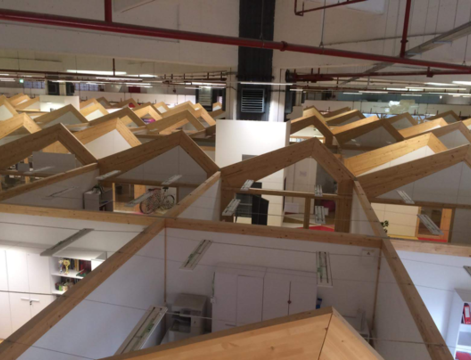
Dr Steve Harding reports back from the Urban M team’s visit to Zagreb and comments on maker movement trends.
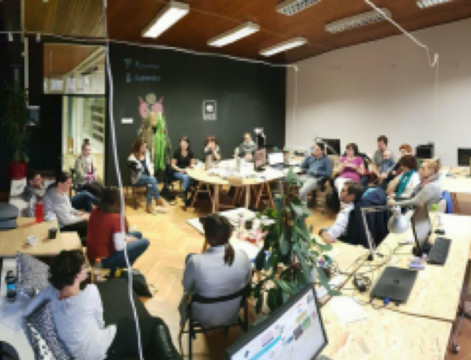
Director of the Institute for Creative Innovation, Dr. Steve Harding, explains what makes STEAM learning unique and why it’s all about the people.
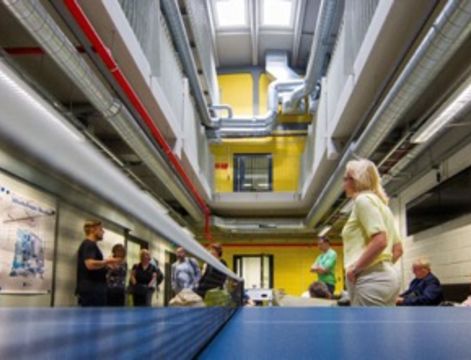
Birmingham City University's Laura Veart shares the activity from September's policy clinic in Vilnius.
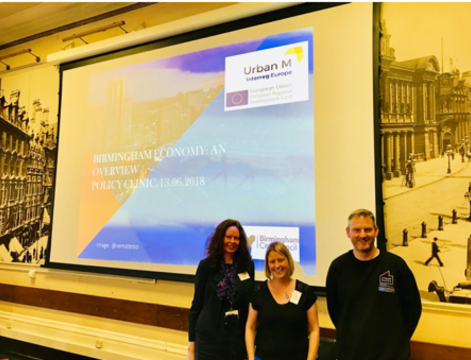
Heather Law from Birmingham City Council shares how UrbanM will be benefitting the Birmingham region and how it will have influence in all it's partner cities.